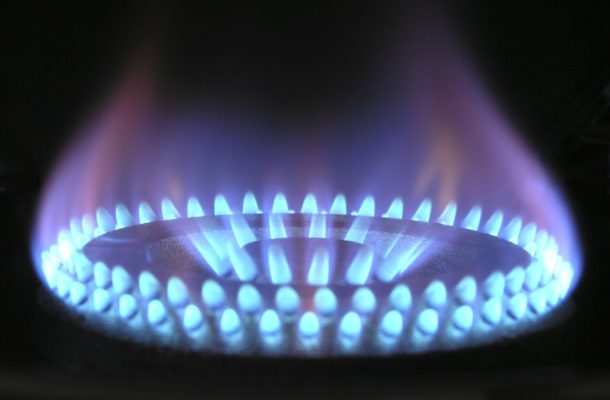
Electricity and gas markets in Australia today
Rod Sims | May 4, 2018

In Australia, the matters surrounding energy, its production or generation, its environmental impact and the market issues that are associated with it, are some of our defining challenges for the 21st century.
I will take this opportunity to address three topics. First, the pricing and market issues affecting gas and electricity in Australia at the moment, including how we arrived at our current position. Second, what the state of play is currently, and third, where things are headed, at least from an ACCC point of view.
I will be discussing the gas market, given our latest interim report to government has just been released, and also about our electricity inquiry which will report to the Government in June.
I won’t be pre-empting what will come in our final electricity report in June in my discussion today; indeed, by a quirk of legal drafting we are legally bound to keep things under wraps until we have reported to government and the report is released. However, I will outline the key issues and concerns, and touch on some recent relevant developments in the market that are relevant for competition.
1. The main issues and how we got here
Energy prices remain a headline issue for Australians businesses. The big jumps in both electricity and gas prices have hit them hard, and particularly those businesses, such as the members of the EUAA, for whom energy costs are a significant input cost. In fact, energy costs are likely the single biggest issue your members are currently facing, which is not news to you.
Electricity
Commercial and industrial, or ‘C&I’, customers tend to be large or medium volume users, and form the largest electricity consumer group.
Industry accounts for 34 per cent of total electricity consumption and large users account for almost half of this.
The commercial sector accounts for some 26 per cent of total electricity consumption, including but not limited to financial services, commercial building services, construction and retail services, as well as public services and agriculture.
C&I customers are characterised by large electricity usage, generally more than 100 MWh per year. The contracts for such customers are typically very different to those for residential or SME customers and the ‘retail’ contribution to the bill is typically relatively small.
There is also a large amount of variability across C&I customers in the scale of their usage, meaning that there is no ‘typical’ C&I customer.
Our preliminary report found C&I customers have faced significant increases in prices, around 28% in real terms between 2007–08 and 2015–16. The contributions to increases made by each component of the bill are shown in below.
Change in the average NEM C&I effective price (c/kWh) from 2007–08 to 2015–16, real values in 2015–16 dollars excluding GST:

Source: ACCC Preliminary Report – Retail Electricity Pricing Inquiry, September 2017
Over the period 2007-08 to 2015–16, network costs contributed 2.6c/kWh of the overall 2.8c/kWh increase.
The next biggest contributor to price increases for C&I customers was environmental costs such as the renewable energy target, premium solar feed-in tariff schemes and other state-based programs. These added an additional 1.2c/kWh.
The wholesale cost of electricity actually fell over this period and the retail margin component of C&I bills also fell by about the same amount, 0.7c/kWh each.
Of course, these numbers only present the picture up until 2015-16. Clearly, the doubling of wholesale prices in the past 12-18 months across the National Energy Market has contributed further significant pain; our June 2018 report will reveal exactly how much. Thankfully, we are starting to see wholesale prices come down in recent months, but there’s still a long way to go before they are where they should be.
Businesses across all sectors have faced even higher increases over the past 12 months, following renegotiation of long term contracts. Many of these businesses cannot pass on the increased costs and are considering reducing staff or relocating overseas. Some businesses have even been forced to close. This is a terrible outcome for these companies, their staff, and ultimately, for the country.
So what has caused these large increases in prices?
In networks, we have seen substantial increases in costs added to bills, driven by over-investment in poles and wires.
The cause of these network cost increases have been threefold.
First, the network regulation framework was setup in a way that strongly favoured the interests of network businesses over electricity users and made it difficult for the Australian Energy Regulator to challenge proposals put forward by network businesses. This period of “light touch” regulation failed Australia.
Secondly, governments responded to outages by increasing reliability standards to levels way above those consumers were willing to pay for.
Thirdly, network businesses successfully challenged the regulatory decisions of the Australian Energy Regulator (AER), by cherry-picking specific issues and outspending the AER in appeals sometimes by around 20 to 1, adding billions of dollars to network revenues for little if any additional benefit.
Some of these issues have been addressed. For example the regulatory regime administered by the AER has been adjusted to rebalance competing interests, and the avenue for limited merits review has been removed, a move welcomed by the ACCC.
However, the over-investment in networks is ‘locked-in’ and will burden electricity customers for decades to come if no action is taken.
In electricity generation, the exit of Hazelwood in Victoria and Northern in South Australia, saw a much tighter supply and demand balance which resulted in higher wholesale prices as competition among the remaining generators has not been as strong.
In addition, the gap left by coal-fired generation has been filled by gas-fired generation which has become the marginal source of generation more frequently, particularly in Victoria and South Australia. As gas is a higher cost source of generation than coal this has tended to push pool prices up.
Not only is gas fired electricity generally more expensive than coal, the increased importance of gas has coincided with the shortages in domestic gas supply and so much higher gas prices. This has been a double whammy, unique to Australia, and coming at time when other factors were also driving prices higher.
The third area we have seen costs rise for electricity customers is environmental or ‘green’ schemes aimed at achieving sustainability objectives. Over the past decade, various state and territory-based environmental schemes have been introduced.
For example in most NEM regions, early adopters of solar PV were offered stunningly generous feed-in tariffs of up to 60 cents per kWh.
These have been of direct benefit to recipients of the feed-in tariff (solar PV customers) but the costs of the schemes have been passed through to all electricity users. Thankfully, these schemes are generally closed to new customers or have ended.
Finally, we have the retail market where, at least for residential customers, we have seen the retail costs and margins contribution to prices grow significantly over the past decade. This is at odds with what we would expect in a market that is open to competition. While retail costs and margins are not as important in the C&I cost stack, this is an important area more generally that we are seeking to address.
Gas
C&I users of gas find themselves in a similar situation but for completely different reasons, as you know. Just as it is with electricity, industrial users form the largest gas consumer group, making up some 46 per cent of east coast gas market sales in 2016.
And just as is the case with electricity, there is the very real prospect of more industrial closures, and associated job losses, with the very high prices being faced by industrial users.
Gas is a significant cost for many companies, and can sometimes account for around 10 to 40 per cent of input costs for some gas intensive industries, and up to 50 to 70 per cent for chemical producers, so price rises have a pronounced effect on these users.
Historically, gas prices for C&I users were in the region of $3-4 a gigajoule (GJ) under stable, long-term contracts. Last year offers for commodity gas supply in early 2017 were as high as $20 per gigajoule! At that time, the users we spoke to often had only one supplier who was willing to supply to them. An unprecedented price rise shock for business and a sure sign of a market not working effectively.
If the market was functioning effectively, the current price signals would be expected to encourage additional investment in new sources of gas supply. But moratoria and other regulatory restrictions in Victoria, NSW and Tasmania are impeding the market response by not allowing onshore exploration and development of potential onshore gas resources.
The massive price shock experienced by C&I users on the east coast was brought about by the simultaneous commissioning of the three LNG export projects in Queensland, at the same time that traditional sources of supply are in decline and a number of state governments are preventing or impeding onshore gas exploration and development.
C&I gas users across the east coast are now exposed to higher and more volatile domestic prices, which are influenced by fluctuating international LNG and oil prices. The impact is expected to be particularly acute on C&I users in the southern States of South Australia, New South Wales, the ACT, Victoria and Tasmania.
Insufficient gas is currently forecast to be produced in south east Australia to meet the domestic demand in the south. The Gippsland Basin Joint Venture, the largest producer in Victoria, is expected to reduce production by about 26 per cent, from 330 petajoules in 2017 to 244 petajoules in 2018.
The graph below, shows that there was insufficient gas production forecast in the Southern States (excluding the Cooper Basin) to meet southern demand in 2018.

Source: ACCC Gas inquiry 2017-2020 Interim report, December 2017, based on ACCC and AEMO data
These factors have a real impact on the prices for gas being paid by C&I users in these southern states. A buyer in the southern states, if unable to reach agreement on terms from a southern supplier, would need to pay the price of gas in Queensland plus the cost of transporting the gas from Queensland to their location.
This ‘buyer’s alternative’ affects negotiations between gas suppliers and buyers in every region in the southern states and could add at least $2/GJ and possibly up to $4/GJ to the prices paid by gas consumers in the southern states.
The ACCC does not weigh into the debate about the environmental issues surrounding these restrictions, but it is our job to point out the consequences of blanket bans on projects, including on conventional reserves, in the form of significantly higher gas costs. It also prevents exploration to confirm the existence of gas reserves that, on a robust cost-benefit analysis, would improve consumer outcomes.
2. Where we are today
In electricity, you could not have missed the discussion of the Energy Security Board’s National Energy Guarantee. This policy seeks to bring an end to the long-standing impasse on climate policy at the same time as dealing with reliability concerns.
We have publicly asked questions about how the Guarantee will operate and whether it might entrench or exacerbate some problems we observe with the operation of the wholesale and contracting markets. The ESB, to their credit, has done further work on the design and we think much of this, at least initially appears to, move in the right direction.
We are now assessing the detail that has now been made available. However, I’m on record as cautioning against a discussion about the future of electricity markets that focuses too much on reliability at the expense of affordability issues.
We have seen what can happen, in networks, when we pursue an unnecessarily high reliability standard. End users paid for it and are still paying for it today. Let’s not repeat that mistake when looking at generation.
The AER has delivered reports on the NSW market and the situation following the Hazelwood closure. In NSW, the AER found that the current sustained nature of high wholesale prices in NSW is not being driven by extreme price events, rebidding or withholding. Instead, the AER pointed to ‘longer-term market challenges’ in the structure of the market and the exit of large baseload coal generators, as well as some short term fuel issues.
The AER found Hazelwood’s exit removed a significant low fuel cost generator, which was largely replaced by higher cost black coal and gas plant at a time when the input costs of black coal and gas plant were increasing.
The other interesting debate occurring in electricity at the moment has been prompted by work done by the Grattan Institute on network valuations. Grattan concludes that network assets in NSW, Queensland and Tasmania are overvalued by some $20 billion and that this should be addressed through voluntary write-downs and end-user subsidies.
It’s a complex and fascinating debate that we are following closely and will be addressing in our final report.
The East Coast gas market
There have been some recent developments affecting the east coast gas market today, including recent pricing changes, the connection of the Northern Territory to the east coast gas market and our recent enforcement activities affecting market behaviour.
While the latest prices are well below 2017 peak, the market is still tight. I’ve already mentioned the $20 per gigajoule being offered for commodity gas in early 2017 but on a somewhat positive note, as we report in our latest April report, the range of offers for commodity gas supply for this year fell over the course of last year and into January of this year.
From a peak of around $20 per gigajoule in early 2017, offers fell to around $8-12 per gigajoule between July and November 2017, before narrowing to between $8-10 per gigajoule between November 2017 and January of this year, as illustrated below.
Commodity gas price offers for 2018 supply in the East Coast Gas Market

Source: ACCC Gas inquiry 2017-2020 Interim report, April 2018
While large C&I users were understandably delaying entering into contracts in the first half of last year, as price offers fell, contracts were entered into and this continued right up to the last days of the year.
So, while we are no longer seeing the peak offer prices for commodity gas, the picture remains a poor one for C&I users.
The market is still incredibly tight, despite the actions of the LNG exporters in committing to divert gas to the domestic market, recent positive announcements such as Arrow Energy’s announcement in December of its 27-year gas supply agreement with the QGC project, and the Queensland Government gas tenement releases.
And for smaller C&I users, these prices and offers are often much higher.
While the downward movement of prices and increase in the number of offers made are welcome developments, gas remains a critical issue and there are many areas that warrant addressing to get the market working more effectively for C&I users.
The Northern Territory is set to be connected to the east coast gas market
In the Northern Territory (NT), construction of Jemena’s Northern Gas Pipeline (NGP) is expected to be completed late this year, which will result in the NT becoming a new source of supply for the east coast, expected at 90 terajoules (TJ)/day (around 33 PJ per annum) of gas.
Incitec Pivot will be one of the users using this new avenue for gas supply, with its Phosphate Hill site in north-west Queensland being supplied by Power and Water Corporation, a foundation customer of the NGP, out to 2028.
We also granted authorisation in March to the joint venture between Central Petroleum and Macquarie Mereenie to jointly market gas from their field in the NT.
While separate marketing of gas generally results in more competitive outcomes, in this case joint marketing will allow further conventional gas in the Mereenie field to be developed sooner than it otherwise would and the JV parties here are likely to face competition when supplying C&I users in the region. Gas from the Mereenie field could become available to customers at or beyond Mount Isa, when the NGP is operational.
There are a number of onshore basins in the NT with the potential to supply significant quantities of gas. Exploration and production from these basins had been put on hold due to the NT Government’s moratorium on hydraulic fracturing of onshore unconventional reservoirs. The NT Government’s recent decision to accept the recommendations of the Independent Scientific Inquiry and lift the moratorium is welcome news.
Jemena has now announced that with the ban being lifted it will extend and expand the NGP. This will increase the capacity of the pipeline from 90 TJ a day to allow up to around 700 TJ a day (or about 250 PJ a year) to be transported to the east coast market.
ACCC enforcement action is helping to bring about more competitive outcomes
The ACCC, as the enforcer of our competition law, investigates possible anti-competitive behaviour, and a number of instances have arisen from our formal inquiries, such as our 2015 East Coast Gas Inquiry and our current inquiry.
In December 2017 we announced that BHP and Esso had given court-enforceable undertakings to end their joint marketing of Gippsland Basin gas from next year.
The ACCC investigated the effect of the joint marketing arrangements after concerns arose about those arrangements during our 2015 inquiry, and was close to taking court action.
The GBJV is the largest producer of gas for the southern states and ensuring separate marketing of that gas by the JV partners will increase competition, which is much needed.
The ACCC expects, and will be watching, to see that gas buyers receive improved prices and contract terms for supply.
The ACCC also investigated the conduct of some retailers, whose unwillingness to trade secondary pipeline capacity on some pipelines was alleged to be restricting competition for the supply of gas to users.
We have now seen that those retailers have been making spare capacity available on those pipelines for use by other market participants.
These users now have a greater choice for sourcing gas supply.
3. What the future holds for the gas inquiry
We are one year in to our three-year gas inquiry. We have released three interim reports, but there is still a huge amount of work ahead of us.
At present, Australia’s east coast gas market strongly favours those with gas over those who want it. This must change, and on many fronts.
In the ACCC’s first two interim reports of its current gas inquiry, we have used LNG netback prices as a price marker for comparing domestic prices.
With the effect of the Queensland LNG operations exposing the east coast gas market to international pricing for the first time, the concept of an LNG netback price, which translates a delivered LNG export price to a price for that gas in Australia, is a useful concept for C&I users.
For example, an LNG netback price at Wallumbilla is calculated by taking a delivered LNG price at a destination port and subtracting the cost of transporting gas from Wallumbilla to the liquefaction facility, the cost of liquefaction and the cost of shipping LNG from Gladstone to the destination port.
The publishing of this information provides an important piece of information that is useful in users negotiating supply contracts with suppliers.
After consulting with a range of stakeholders earlier this year, a number of whom are in this room, the ACCC has now decided to publish an LNG netback price series on our website as a trial measure throughout this inquiry. We will publish both a series based on measures of recent and historic Asian LNG spot prices as well as a forward indicator extending to the end of the following calendar year.
This new information to C&I users, together with information about the factors that are driving domestic gas prices, aims to assist them in negotiating for gas supply. You can expect to see this new information on our website in the coming months.
In addition to our work on publishing LNG netback prices, we will continue to publish a range of other information designed to improve market transparency, such as gas prices paid to gas producers and prices paid to retailers by C&I customers. We will also continue to report on prices offered over time and prices agreed to in recent contracts.
In our April 2016 report on the East Coast Gas Market, we recommended that all explorers and producers, including non-ASX listed companies, should report consistent reserve and resource information across the east coast gas market.
We are now working to implement and test this recommendation. As a first step, we are working with other government agencies to identify the amount of overlap of information and look for opportunities to consolidate and improve consistency of reporting across the board.
Following our findings in our 2015 inquiry of monopoly pricing and lack of information around pricing of pipeline services, Dr Vertigan of the Gas Market Reform Group (GMRG)’s reforms have started to come into effect.
In our latest April report, we looked at whether the information recently published by the pipeline operators under these reforms is sufficient to address the information asymmetry issues we identified in 2015.
While it is early days, and further information is to be published later this year, what we have found so far concerns us. Our comparison of the published standing prices for transportation against the prices in contracts and invoices has shown that many of the standing prices published are higher than the range of prices paid under existing agreements.
And further, prices agreed in the few new contracts recently entered into are also generally lower than these published standing prices.
The published standing prices are meant to provide an indication of the sort of pricing a customer can expect to achieve in the market. I’m not so sure that they really do.
We will continue to monitor and report on the effectiveness of these reforms as they roll out. We will also closely monitor market prices and call out offers that, while they might be legal, reflect an excessive use of market power.
And in July we will report on the demand and supply outlook for 2019 as part of our advice to the Government under the Australian Domestic Gas Security Mechanism.
The electricity inquiry
Our final electricity report at the end of June will update the picture with the latest data, picking up much of what has been happening in the wholesale market in the past 18 months, and make many recommendations about what can be done to improve electricity affordability.
In the wholesale market for example our report will look at how changes in market structure have affected outcomes over time. This includes the exit of large generators and changes in ownership. We will also consider whether any changes to the market rules are needed to prevent or address any recurrence of what we have seen in the past 18 months or so.
As I mentioned earlier, we will also assess the recently released detail on the NEG.
With networks, the work by the Grattan Institute is a welcome contribution to the debate and we are engaging with all stakeholders on these issues to understand how best to deal with the issue of overinvestment.
With LMR out of the picture the AER is now working in a more even playing field when it comes to making decisions that balance the interests of network owners and customers.
With environmental schemes, we are looking at how environmental schemes should be funded, whether as charges to electricity consumers or through the taxation system as the Queensland government recently did with its solar bonus scheme.
And in retail, for example, we are examining what is causing the large increase in retail costs and how this can be addressed. What barriers exist to competition driving down costs, and this being passed on to consumers?
And we will provide recommendations on so much more. Our sole focus is on improving electricity affordability for Australian consumers and businesses.
Conclusion
The energy market in Australia is complicated, it is undoubtedly political and it is unquestionably important for all businesses in Australia.
There are a number of elements at play in both the gas and electricity markets that are affecting supply, and prices, with the enormous pain ultimately felt by C&I and residential consumers.
Very important for our reports to government on the state of the market are the experience of users, particularly C&I users such as the members of EUAA. The ACCC appreciates the continuing cooperation we have had from the EUAA and its members.
The energy market is working extremely well for energy companies, but is working badly for commercial and industrial users. It is the C&I customers who need us to find solutions; the energy companies don’t have as strong an incentive to fix the problem.
There is much to be done in both electricity and gas markets, and we will continue to work with you until these issues are fully addressed.
ACCC Chairman Rod Sims delivered this address to the Energy Users Association of Australia’s (EUAA) 2018 National Conference, highlighting the current state of Australia’s electricity and gas markets.
SHARE WITH:
Rod Sims was appointed Chairman of the Australian Competition and Consumer Commission in August 2011 for a five year term and reappointed for a further three years in August 2016.














